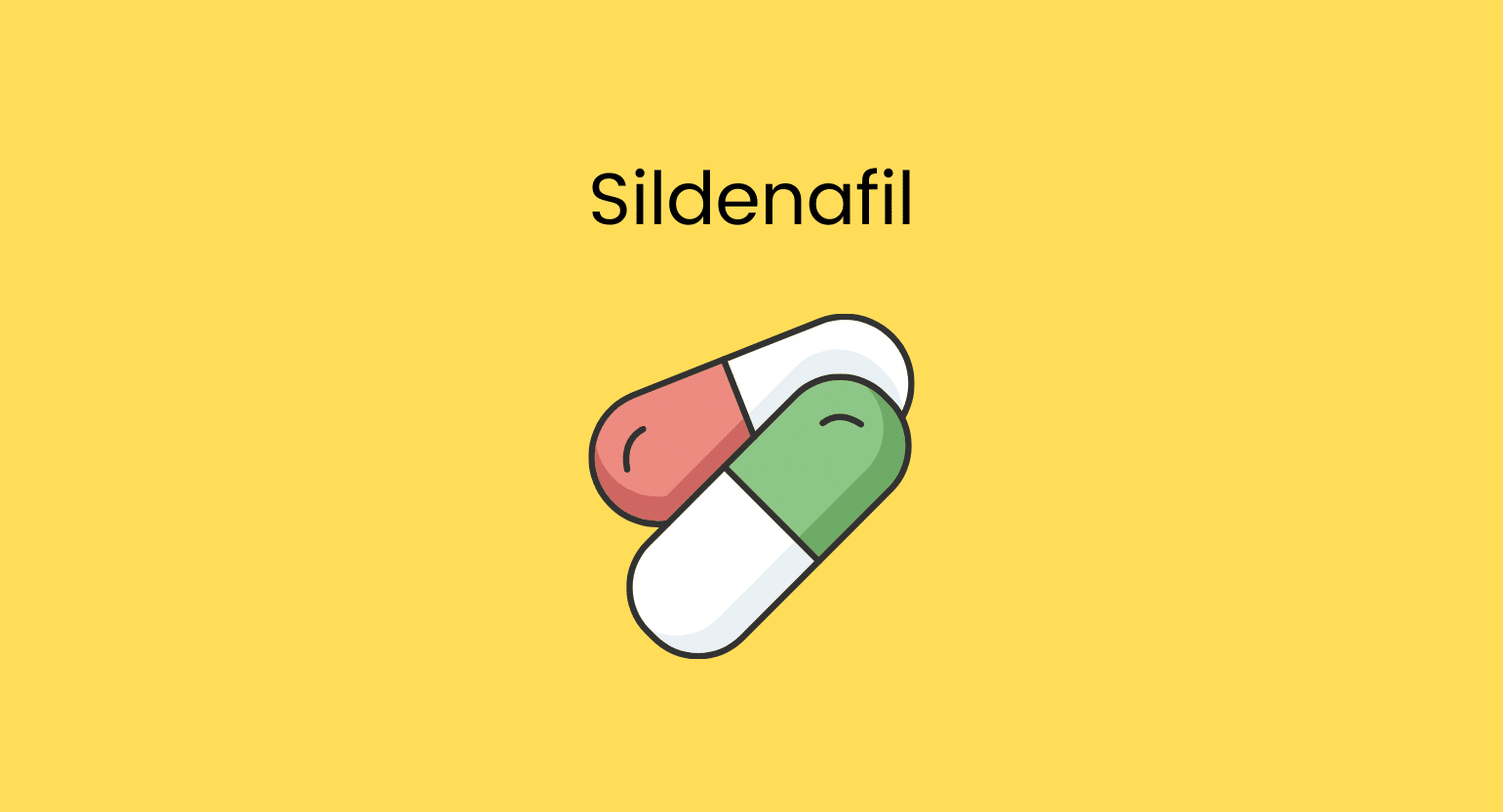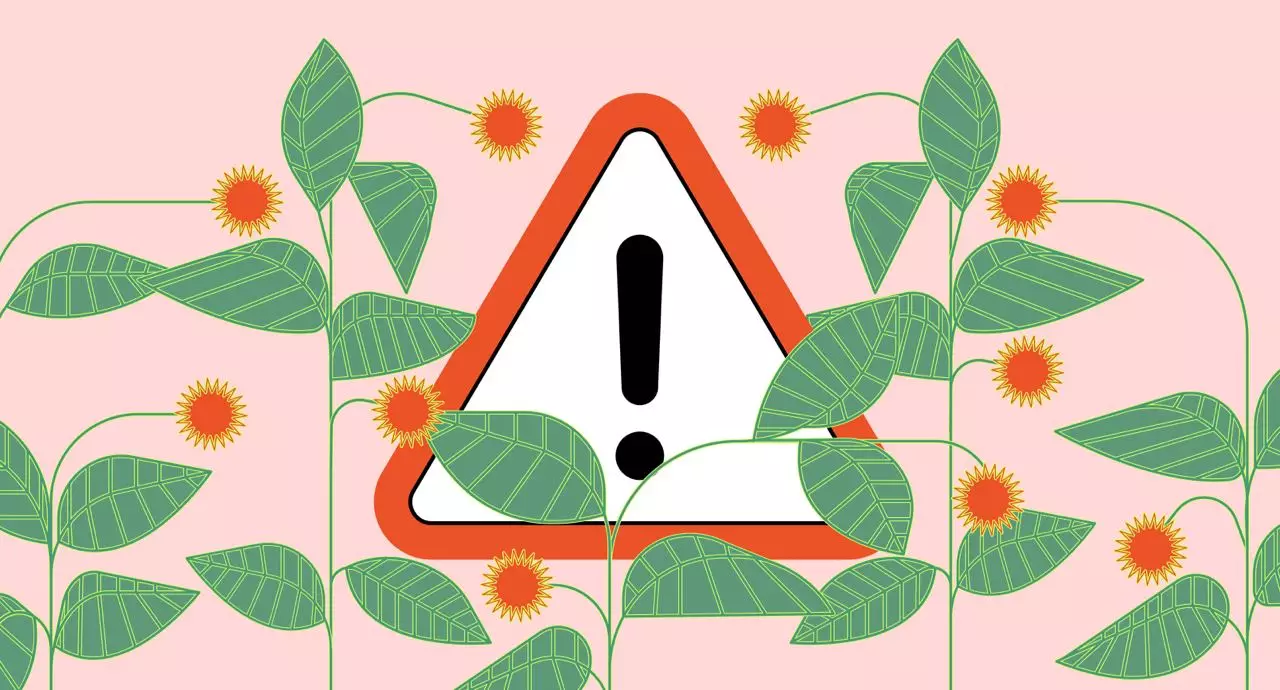Does Kratom Interact With Sildenafil?
Kratom and sildenafil are used for entirely different purposes. However, some of their side effects overlap.
For example, kratom and sildenafil can cause a drop in blood pressure. Taking these compounds together could result in feelings of dizziness, confusion, and fainting — which can be especially dangerous while driving. Fainting can also lead to serious injuries.
Kratom alkaloids may also compete with sildenafil for metabolism in the liver — which means both substances will remain active in the body longer. This increases the risk of more serious side effects like priapism.
Sildenafil is mainly metabolized in the liver by two enzymes: CYP3A4 (major route) and CYP2C9 (minor route) [1]. This is important because kratom has moderately inhibitory effects on these two enzymes [2].
Is it Safe to Take Kratom With Sildenafil?
While serious side effects are unlikely, it’s wise to avoid taking kratom on the days you plan on taking Viagra or other sildenafil products.
Ask your doctor about kratom before you mix, and aim to separate the doses by 2 hours to reduce your risk of side effects further.
Elevated blood levels of sildenafil can correspond with an increased incidence of adverse effects. Consuming both kratom and sildenafil can be potentially dangerous, as kratom will inhibit the proper clearance of sildenafil.
Nonetheless, sildenafil does have a relatively short elimination half-life (3-4 hours), which does much to mitigate the risk.

What Is Sildenafil?
Sildenafil — commonly known by its trade name, Viagra — is a prescription-only PDE5 inhibitor, although it is still available over-the-counter in some places like the UK [3].
Phosphodiesterase (PDE) inhibitors work by blocking an enzyme located in the walls of blood vessels. This causes blood vessels to relax, thus helping to increase blood flow to certain areas of the body.
Sildenafil specifically blocks the PDE5 enzymes, primarily located in the blood vessels supplying blood to the erectile tissue in the penis.
Sildenafil is typically taken orally. Effects are usually felt in 20 minutes and last for 2 hours.
Sildenafil Specs

| Drug Name | Sildenafil |
| Trade Name | Viagra |
| Classification | PDE5 Inhibitor |
| CYP Metabolism | CYP3A4 and CYP2C9 |
| Interaction With Kratom | Metabolic inhibition |
| Risk of Interaction | Moderate |
What is Sildenafil Used for?
The FDA has approved sildenafil for the following indications:
- Treatment of ED (erectile dysfunction)
- Treatment of pulmonary arterial hypertension
It should be noted that these indications are related to different formulations of medications using sildenafil — be sure to use the correct one for your treatment goals.
Sildenafil also has a couple of off-brand indications (not approved by the FDA):
- Alleviate vasospasm and treat severe ischemia and ulcers in fingers and toes for people with secondary Raynaud’s phenomenon [5]
- Sildenafil has also been studied for treatment in high-altitude pulmonary edema [6]
Generic & Brand Name Versions
Sildenafil is available under the following brand names:
- Viagra
- Revatio
- Kamagra
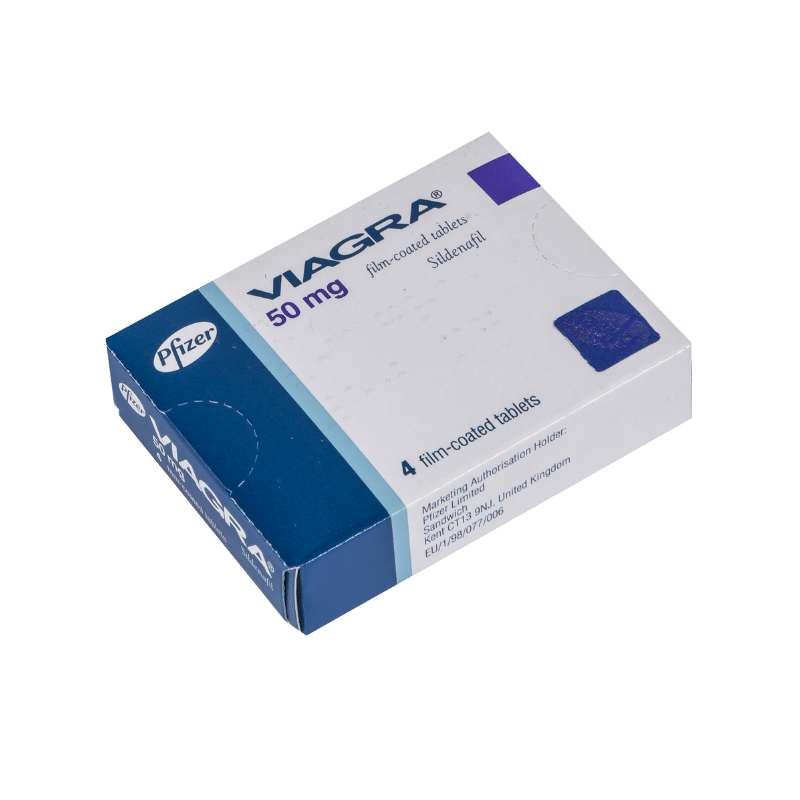
What Are the Side Effects of Sildenafil?
The most common side effects of sildenafil include the following:
- Flushing
- Headache
- Heartburn
- Nasal congestion
It should be noted that there was a significant association between bigger doses and side effect prevalence [7].
Rarer but more serious side effects include [8]:
- Hearing loss
- Fainting spells or dizziness
- Priapism (prolonged & painful erection)
- Vision problems
People should not take sildenafil on nitrates or within hours of taking an alpha one antagonist.
What is Kratom?
Kratom is an all-natural herbal product making waves in the US.
Derived from the leaves of the Mitragyna speciosa tree, kratom has a long list of beneficial properties. These stem from the potent alkaloids contained inside.
Scientists have identified mitragynine and 7-hydroxymitragynine as the two main alkaloids in kratom, but many others exist.
Alkaloids are naturally occurring compounds in plants of all types. They are responsible for many of the healing properties that plants have.
Kratom is currently unregulated in the US, but this has not stopped the kratom community from growing.
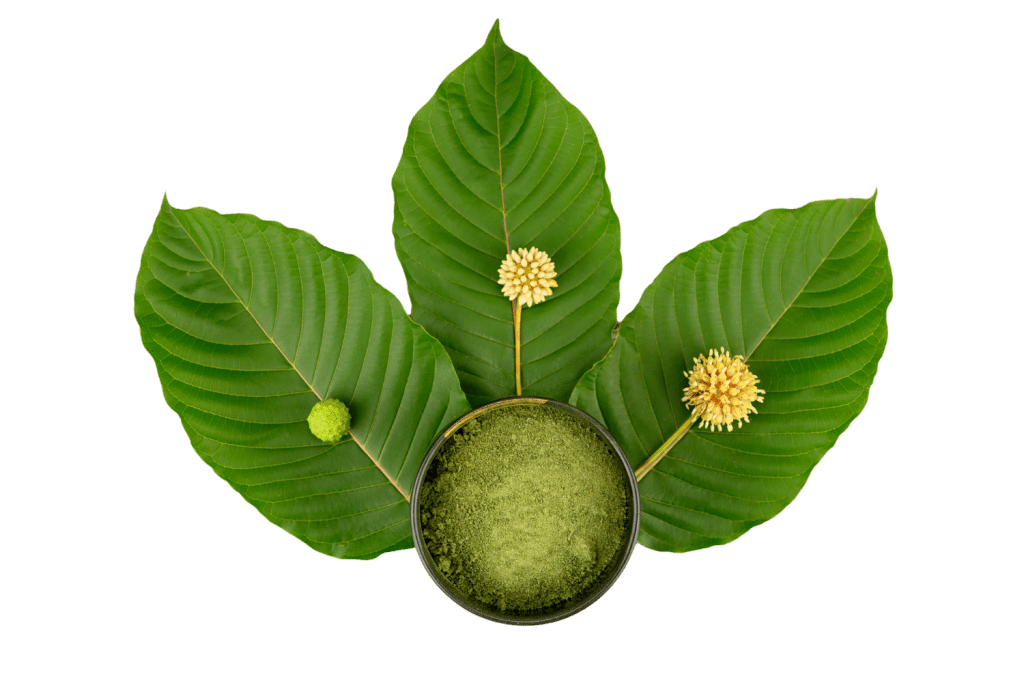
What is Kratom Used for?
For centuries, kratom was used for traditional healing purposes by indigenous peoples in Southeast Asia. Workers would chew the leaves to increase energy and alertness, and tea would be made to treat digestive issues.
Now that it’s become popular in the west, scientific research has validated these claims and discovered some new applications — such as mitigating pain and helping users wean themselves off addictive opiate medications:
Some of the associated health benefits of kratom include:
- Alleviates pain related to arthritis and fibromyalgia
- Ameliorates symptoms of opioid withdrawal
- Effective weight loss supplement
- Increased mental and physical energy
- Induces sleep
- Provides feelings of euphoria
- Powerful analgesic properties
- Relieves symptoms of anxiety and depression
What’s the Dose of Kratom?
There are several ways to take kratom: capsules, tinctures, powder, or tea. Regardless of the method you prefer, kratom’s effects will depend on the dose you take.
This is the central fact to remember about kratom’s properties: if you don’t control the dosage, you won’t be in control of the effects.
Doses typically fall into three ranges. Each range has different effects:
- Low dose (1 – 5 g): Acts as a stimulant and nootropic.
- Medium dose (5 – 10 g): Produces more potent analgesic and anxiolytic effects that crowd the stimulating properties.
- High dose (10 – 15 g): Strong pain and anxiety with sedation.
Check out our general dosage recommendations for kratom for a more in-depth explanation.
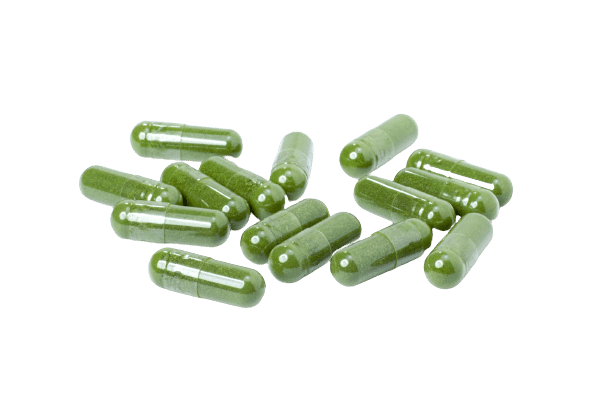
What Are the Side Effects of Kratom?
Here are the side effects kratom consumption can cause, although they’re usually not serious.
The most common side effects include:
- Anxiety or jitteriness
- Constipation
- Diarrhea
- Dizziness
- Heart palpitations
- Insomnia
- Nausea
- Itchiness
- Loss of muscle coordination
More serious adverse effects include:
- High/Low blood pressure
- Low libido
- Nausea
- Poor appetite
- Seizures
- Tremors
The most significant adverse effect of kratom has to be the possibility of developing an addiction. However, kratom is generally safe and unlikely to cause overdose or death.
Unlike conventional opiates, kratom alkaloids don’t inhibit respiration and usually make users vomit and feel ill long before a lethal dose can be reached.

What Are the Different Types of Kratom?
Apart from dosage, you should also consider which kratom strain you are using if you want to control your kratom experience better.
Kratom has three main strain types: white, red, and green.
There are other kratom strains, but these are related to different factors, such as where the kratom was grown.
These strains have slightly differing alkaloid profiles and thus provide a different experience for the user,

White Vein Kratom
White vein kratom is known to elicit the stimulant-like effects of a low dose of kratom. If you want to feel physically and mentally stimulated or boost your mood, you should go with a white-veined strain.

Red Vein Kratom
Red vein kratom is excellent at providing the analgesic and anxiolytic effects of a mid-to-high dose of kratom.
These strains are an excellent choice for those who experience anxiety or chronic pain. With a red-veined strain, you don’t have to take as much kratom to elicit these effects.

Green Vein Kratom
Green vein kratom is for those who want to experience all of what the kratom spectrum offers.
Instead of the targeted experience of a white or red-veined strain, green vein kratom gives the user a little bit of everything.

Yellow Vein Kratom
Yellow-vein kratom is the same as green, except it’s much less potent.
Those sensitive to kratom or first-timers are usually the ones who gravitate toward this strain.

Key Takeaways: Is it Safe to Mix Kratom & Sildenafil?
This depends mainly on much of these compounds you are taking and how you’re taking them.
Small doses of sildenafil are unlikely to cause significant adverse effects if you are a regular kratom consumer. The adverse effects of metabolic inhibition are reduced if you space out the compounds. For instance, only taking kratom in the morning and sildenafil at night.
If you take considerable amounts of both compounds regularly, you’ll put yourself at an unnecessarily high risk.
You should still consult your doctor about mixing these compounds if you have a prescription for sildenafil.
- Muirhead, G. J., Rance, D. J., Walker, D. K., & Wastall, P. (2002). Comparative human pharmacokinetics and metabolism of single‐dose oral and intravenous sildenafil. British journal of clinical pharmacology, 53, 13S-20S.
- Hanapi, N. A., Ismail, S., & Mansor, S. M. (2013). Inhibitory effect of mitragynine on human cytochrome P450 enzyme activities. Pharmacognosy Research, 5(4), 241.
- Smith, B. P., & Babos, M. (2020). Sildenafil.
- Wright, P. J. (2006). Comparison of phosphodiesterase type 5 (PDE5) inhibitors. International journal of clinical practice, 60(8), 967-975.
- Roustit, M., Blaise, S., Allanore, Y., Carpentier, P. H., Caglayan, E., & Cracowski, J. L. (2013). Phosphodiesterase-5 inhibitors for the treatment of secondary Raynaud’s phenomenon: systematic review and meta-analysis of randomised trials. Annals of the rheumatic diseases, 72(10), 1696-1699.
- Estrada, V. H. N., Franco, D. M., Medina, R. D., Garay, A. G. G., Martí‐Carvajal, A. J., & Arevalo‐Rodriguez, I. (2017). Interventions for preventing high altitude illness: Part 1. Commonly‐used classes of drugs. Cochrane Database of Systematic Reviews, (6).
- Moreira Jr, S. G., Brannigan, R. E., Spitz, A., Orejuela, F. J., Lipshultz, L. I., & Kim, E. D. (2000). Side-effect profile of sildenafil citrate (Viagra) in clinical practice. Urology, 56(3), 474-476.
- Ausó, E., Gómez-Vicente, V., & Esquiva, G. (2021). Visual side effects linked to sildenafil consumption: an update. Biomedicines, 9(3), 291.

